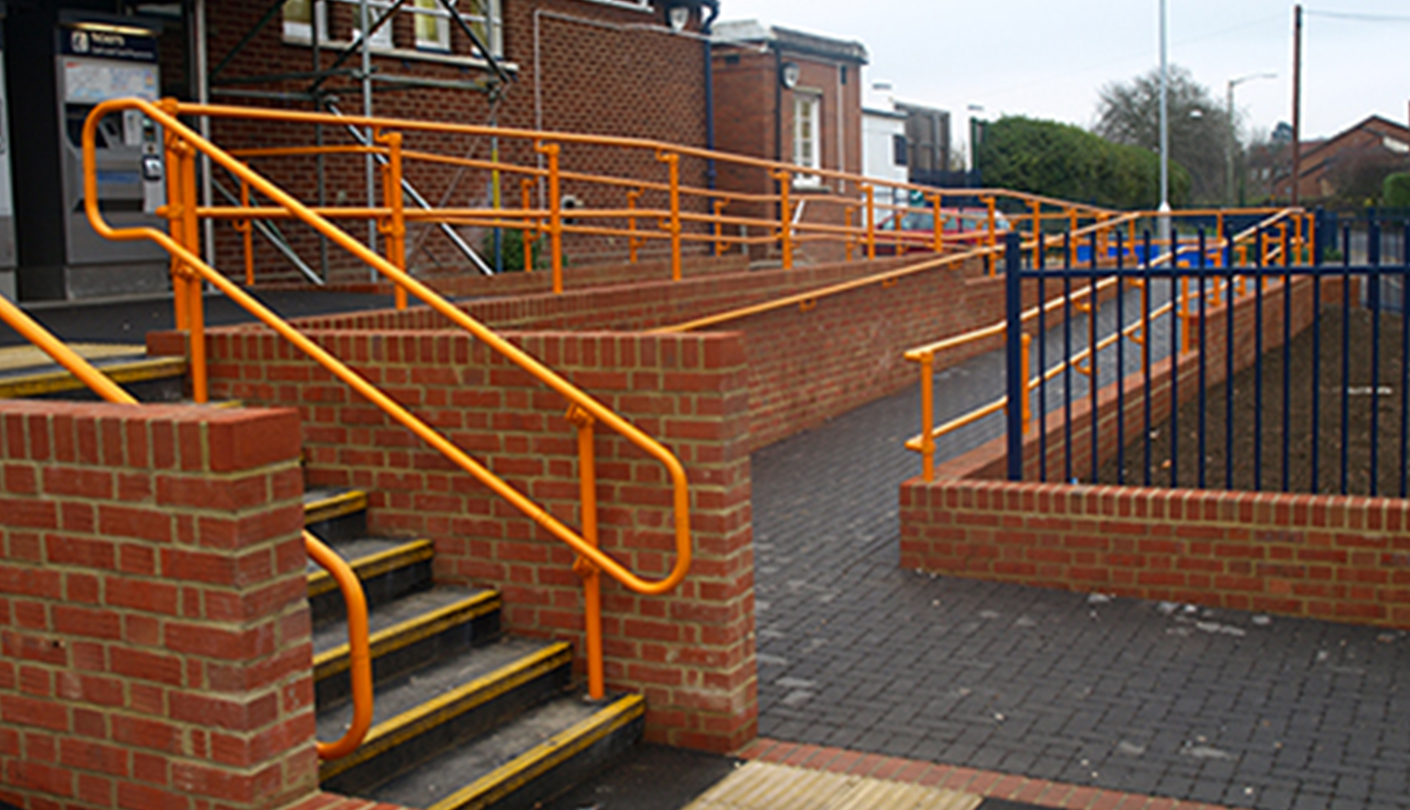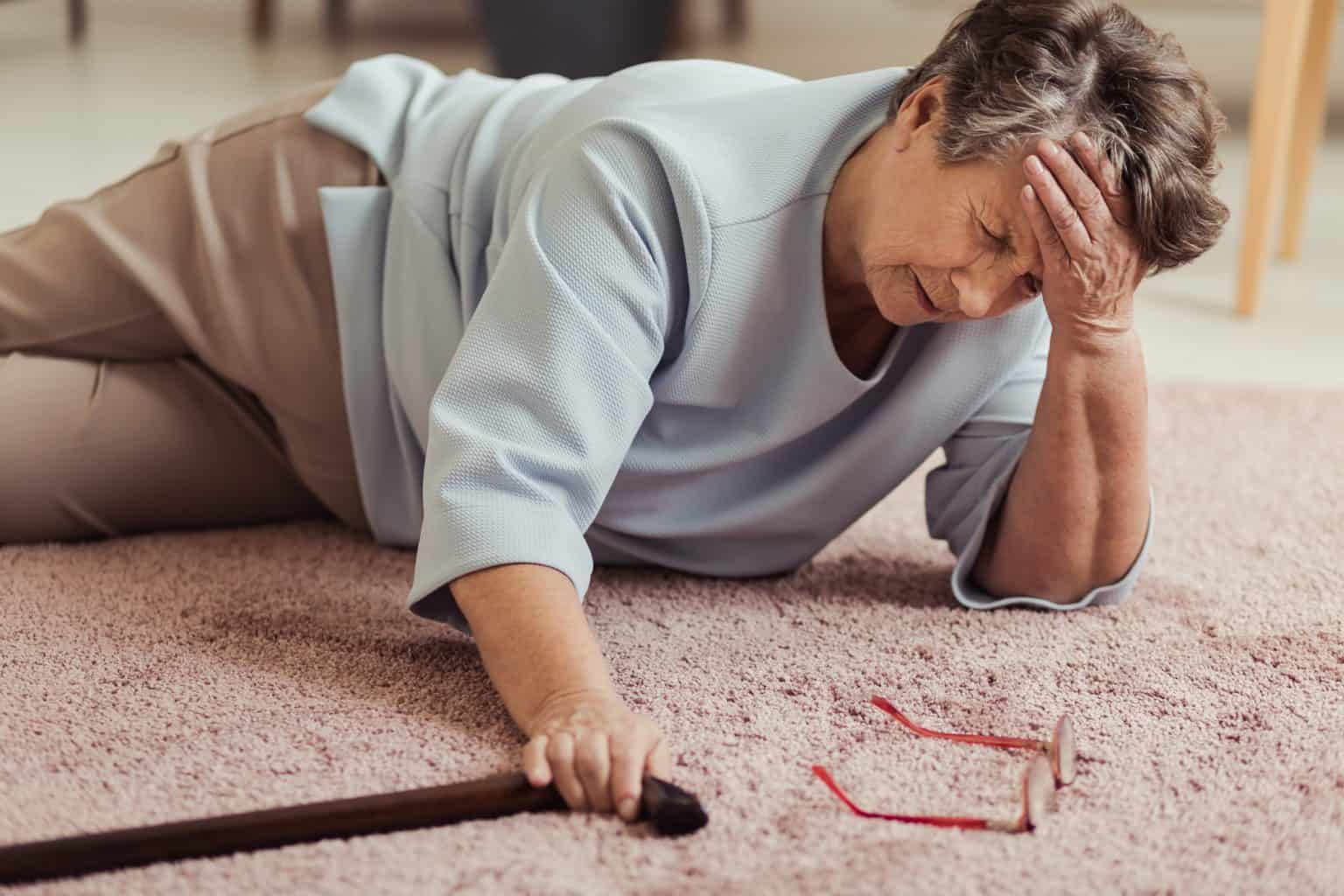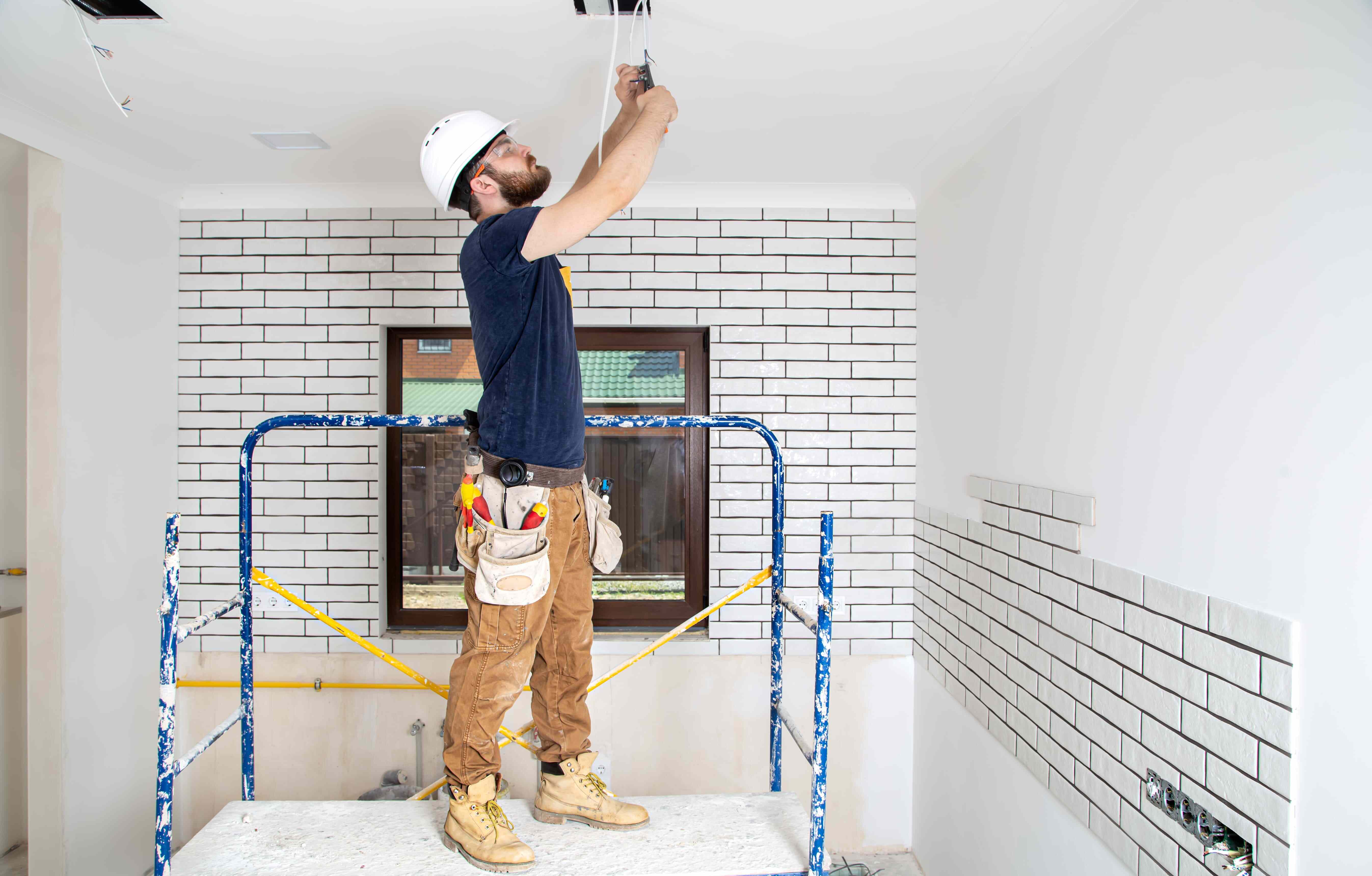1. The Intersection of Design and Longevity: A Melbourne Perspective The narrative of interior design in Melbourne is undergoing a sophisticated transformation, moving away...
Why Every Home Needs Handrails for Disabled Access
Stepping into a home should feel secure, not like tiptoeing through a minefield. Yet for millions of Australians with mobility issues, simple tasks like climbing stairs or hopping into the shower can feel daunting. Imagine gliding out of a bathtub without slipping, or confidently navigating a staircase with a firm steel rail at hand.
Handrails for disabled access are the unsung heroes of home safety — supporting balance, preventing spills, and freeing you to live independently. In short, a well-placed handrail is not just a boring metal bar – it’s a peace-of-mind upgrade.
Recent data shows that falls are the #1 cause of injury in Australia. Every year, falls send hundreds of thousands to hospital, many of them our parents or even ourselves someday. We joke about grandma needing a hip replacement – but the reality is stark: one slip and boom, life changes.
Adding sturdy handrails and grab bars can dramatically reduce these accidents. Studies (and plenty of common sense) tell us that anything that offers a little extra grip goes a long way. Whether it’s a sleek rail by the staircase or a grab bar in the shower, these small fixtures are literal life-savers for people with disabilities, seniors, or anyone with balance wobbles.
Nobody enjoys feeling frail or helpless at home. We’re young professionals here in Melbourne – we like modern style and smart design – but we’re also sensible. Handrails blend right into contemporary decor now, so you don’t have to sacrifice style for safety. In fact, designers now offer matte black or brushed brass rails that look like chic art pieces.
Picture this: a polished stainless steel rail running along your bathroom wall or beside a few garden steps – subtle but crucial. It catches you before that rogue tile or rainy day can trip you up.
For example, consider shower safety. If you or a loved one ever worry about slipping on wet tiles, a dedicated handrail installation in Melbourne can make a world of difference. Companies like Vitalease specialize in stylish shower handrails tailored to Melbourne homes. They blend seamlessly with decor – think black bars against white tile or brass rails that match your taps.
This isn’t just for “oldies” either; you might not notice the rail until you do. And then you’ll be grateful it’s there. Even the National Disability Insurance Scheme (NDIS) expects therapists to recommend these rails – so you might even get funding help to install them. It’s not just a boring retrofit, it’s a savvy, forward-thinking home upgrade.
Safety Benefits: Preventing Falls and Boosting Confidence
Handrails turn slippery or uneven surfaces into manageable terrain. They act like your personal walking buddy, cheering “You’ve got this!” when a step is tricky. The moment your hand touches that rail, your balance gets a confidence boost. This is why safety experts constantly preach about barriers: “avoid steps or have handrails next to them,” as an Australian government falls-prevention guide bluntly advises.
In practice, a hallway or staircase without a rail is an accident waiting to happen, especially in poor lighting or if you’re carrying groceries.
Consider this: in autumn, rain makes every doorstep a slip hazard. Without a handrail, one rogue leaf or stray water patch can send you tumbling. But with a sturdy rail to grip, you feel anchored. It’s literally a hand to hold onto. Research underpins this intuition: even a small rail cuts fall risk by giving an extra hold.
For the elderly or disabled, it can mean the difference between independence and needing round-the-clock care. As one disability expert put it, handrails “minimize the risk of slips and falls”, empowering people to move without fear.
Handrails also simplify daily life in subtle ways. Carrying a laundry basket, navigating with crutches, or even juggling two kids – you can lean on that rail for extra balance. It’s like having a thoughtful friend installed on your wall. With a rail, you’re less likely to stub a toe or catch a foot on a rug; you simply have that extra safety net.
Key Takeaways – Why Handrails Matter:
- Prevent Injuries: Falls from stairs or in bathrooms lead the nation’s injury stats, but rails help stop those falls. Think of it as installing extra insurance at home.
- Empower Independence: Supporting yourself on a rail (rather than on someone else) keeps you confident. Seniors and disabled adults can handle bathrooms and hallways solo, preserving dignity and reducing caregiver stress.
- Weather Safety: Slick steps after rain or pool water beside the tub become non-events when handrails are in place. They’re like “safe landing zones” on treacherous floors.
- Future-Proof Living: You might install a rail “just in case” – and someday be grateful you did. It’s a little up-front cost for long-term freedom (and as one expert quips, much cheaper than an ambulance ride!).
Indeed, governments and health organizations emphasize railings in design guidelines. Building codes require handrails on ramps and stairways in public buildings (thanks to the Disability Discrimination Act). Private homes aren’t legally forced to install rails, but many experts say “why take the risk?” Adding them is simply sensible. Even health advisories tell renovators: think safety features now, so you can relax later.
Where to Install Handrails: Making Your Home Barrier-Free
So, where exactly should you put handrails? The short answer is: everywhere it could be needed. Of course, focus on obvious hot spots. Below is a quick guide (and a simple table) to spark ideas:
| Location | Why It Helps |
|---|---|
| Staircases | Prevents trips going up/down steps. (Big or small stairs alike.) |
| Ramp / Entrance | Ensures safe access for wheelchairs, walkers, scooters. Many Aussies use ramps; a railing gives them stability. |
| Bathroom (shower, tub, toilet) | Slippery surfaces and getting up/down are high-risk. A rail here turns a danger zone into a cozy area. |
| Hallways & Corridors | Narrow or dim hallways can be slips traps. A side rail lets anyone steady themselves walking through. |
| Kitchen (work area) | Maneuvering in the kitchen – lifting pans, carrying dishes – can wobble you. A rail or grab bar gives an extra support point nearby. |
| Outdoors (porch, deck) | Wet timber or garden steps? A rail means one hand is always free to hold, even carrying shopping or a toddler. |
Different rail types suit different needs: horizontal bars for pulling up, vertical rails for turning support, even fold-down rails for saving space in a small shower. Here’s a quick orientation: straight bars are super sturdy for everyday balance. Angled or L-shaped rails help if you need two grip options at once.
Suction or clamp-on bars exist too (good for rentals or temporary fixes), though pro installers warn they are not rated for full falls. For heavy-duty support, floor-to-ceiling poles give rock-solid aid. And if aesthetics matter, there are rails in warm timber, matte black, brushed brass – even padded foam handles for comfort.
Safety by Design: The great thing is you can make rails part of your home’s look. No more clunky metal everywhere. Imagine a sleek wooden grab rail that looks like part of a premium wardrobe, or a rail whose color matches your tapware. Architects now treat handrails as design elements: they can echo your home’s lines or serve double-duty (e.g., a rail next to the toilet that also acts as a towel bar). The result? A safe, stylish home that feels like your space, not a hospital.
Beyond Basics: Practical Tips and Compliance
Thinking of installing rails? A few expert tips can keep things safe and code-friendly. One: always fix rails into wall studs or solid backing – not just tile or plaster – so they won’t spin out of the wall when you use them. Many builders recommend pro installation to guarantee strength.
Second: the ideal height is roughly at elbow level when standing (typically about 865mm–1000mm above the floor), but check local guidelines (Australia’s building code has specifics for public ramps, for example). Lastly, think distance: there should be at least 100mm clearance behind a hand so your whole hand can grip.
If you’re in Melbourne, the good news is there’s local help. Firms like Vitalease or others offer handrail installation services, handling everything from design to drilling. They’ll ensure rails meet standards (some rails must hold 110kg by building rules) and look great. Plus, if you’re on an NDIS plan, some funding can be allocated: grab bars and rails are typical NDIS-approved aids. So, a call to an occupational therapist might even cover most of the cost for that new rail.
For more information on safety guidelines and building requirements, you can also check out Australian government accessibility standards.
A quick cost note: aftermarket rails aren’t as pricey as you might fear. Retail bars range from a couple hundred dollars per bar (installed) to a bit more for fancy styles. Compare that to the $5,000+ hospital bills one severe fall can bring. Suddenly the value is clear: a few hundred up front could prevent thousands in emergency fees. It’s like buying a golden ticket to no-fall land.
And don’t forget maintenance: give rails a quick wipe-down occasionally, check screws, and replace any that feel loose. A well-cared rail is a safe rail. Also consider complementary upgrades: non-slip mats in the bathroom, a raised toilet seat, or even reinforced walls. Every little improvement adds to the overall resilience of your home.
Conclusion
At first glance, handrails might seem mundane – just functional bars. But think again. Handrails for disabled access are tiny investments with huge returns. They can transform a home into a safe harbor, letting seniors, people with disabilities, and even energetic toddlers live, move, and play without constant fear of falling. In Melbourne’s homes and gardens, adding just one handrail can change a morning routine from “timed race against the shower” into a calm, confident ritual.
We all want our homes to be places of comfort and style. With the simple addition of handrails, we make them safe too. In the words of safety experts: avoid steps and install rails. For practical next steps, take a walk through your home. Identify any tricky spots – maybe a steep step out back or a slippery tile corner – and envision a rail there. Chat with a home builder or an occupational therapist about the best designs. You’ll be surprised how seamlessly these rails integrate into modern interiors. After all, staying upright never goes out of style.
Ready to take action? Inspect your bathroom today: are handrails within reach? Check your staircases and hallways: could a little metal support ease your path? Even if you don’t need them now, consider installing rails as a form of insurance.
Future-you will thank you on that rainy Melbourne morning. Have you added a handrail that made a big difference? Share your story or tips in the comments below – let’s make every Melbourne home a model of accessible design, together.
Every home can be a safe home. By thinking ahead about mobility and adding simple features like handrails, you turn a potential hazard into a courtesy. So go ahead—give your home the steady support it deserves.
Frequently Asked Questions
Where should I install a handrail for disabled access in my home?
The most important areas are bathrooms, staircases, and entryways. These are high-risk zones for slips and falls, making them prime spots for added support.
Do handrails for disabled access need to meet Australian Standards?
Yes. In Australia, handrails should comply with accessibility standards to ensure they’re safe, sturdy, and at the correct height for use.
Can modern handrails still look stylish in my home?
Absolutely. Today’s handrail designs come in sleek finishes like brushed stainless steel, timber, and even matte black options—adding both function and flair.
How much does handrail installation in Melbourne usually cost?
The cost varies depending on materials and the complexity of installation, but it’s generally considered a cost-effective way to boost both safety and property value.




